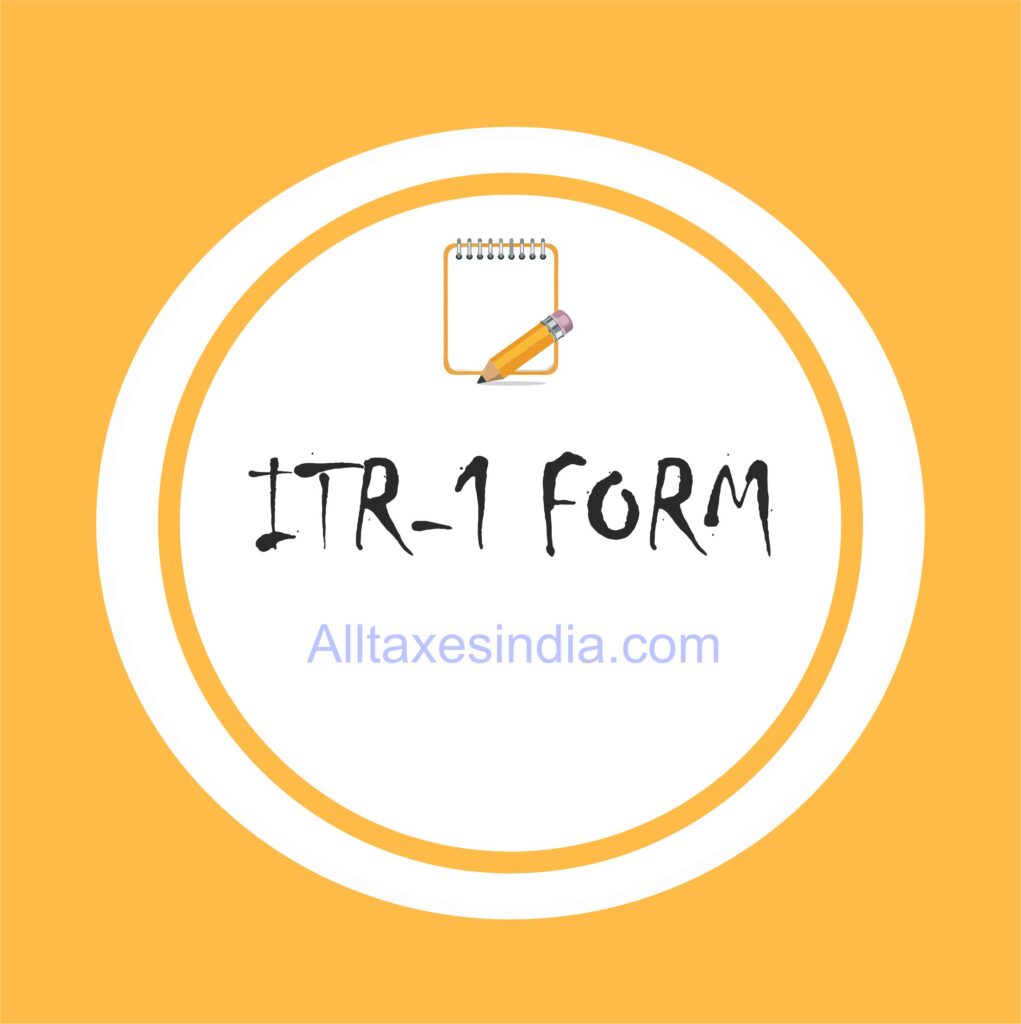ITR-1 Return Filing

ITR-1 Return Filing
ITR-1, also known as “Sahaj,” is the income tax return form for salaried individuals in India with income up to Rs. 50 lakh. It covers salary income, income from one house property, and other sources like interest. Easy to file, it’s primarily for residents with straightforward income sources.
ITR-1 (Sahaj) Filing
Complete Guide to Filing ITR-1 (Sahaj) in India
ITR-1, also known as “Sahaj,” is one of the simplest and most widely used income tax return forms in India. It is designed primarily for salaried individuals with straightforward income sources, making the process of tax filing smooth and accessible. This guide explains everything about ITR-1, including eligibility, details required, and steps to file.
1. What is ITR-1 (Sahaj)?
- ITR-1 (Sahaj) is the income tax return form for individuals with income primarily from salary, pension, or limited sources like interest from savings accounts and fixed deposits.
- It’s ideal for residents with income up to Rs. 50 lakh, making it the most suitable form for many salaried employees.
2. Who is Eligible to File ITR-1?
ITR-1 is for individuals who meet the following criteria:
- Are residents of India (not available to NRIs).
- Have an annual income up to Rs. 50 lakh.
- Earn income from salary or pension.
- May earn income from a single house property (rented or self-occupied).
- Receive interest income from sources like savings accounts, deposits, etc.
- Receive agricultural income (up to Rs. 5,000).
3. Who Cannot File ITR-1?
You cannot use ITR-1 if:
- You are a non-resident or resident but not ordinarily resident (RNOR).
- Your total income exceeds Rs. 50 lakh.
- You have income from more than one house property.
- You earn from capital gains, business, or profession.
- You have foreign assets, income, or claims for double taxation relief.
- You have agricultural income above Rs. 5,000.
4. Income Sources Covered in ITR-1
ITR-1 can be used to report income from:
- Salary or pension.
- One house property.
- Other sources such as interest from savings accounts, fixed deposits, and recurring deposits.
- Agricultural income up to Rs. 5,000.
5. Documents Required to File ITR-1
To accurately file ITR-1, gather the following documents:
- Form 16 from your employer, which summarizes salary details and TDS (Tax Deducted at Source).
- Form 26AS, which is a consolidated annual tax statement showing all taxes deposited on your behalf.
- Bank statements for interest income.
- Details of deductions (under sections like 80C, 80D) if claimed, such as investments in provident funds, life insurance, or medical insurance.
- Aadhar Card for verification purposes.
6. How to File ITR-1 Online (Step-by-Step Guide)
Filing ITR-1 is simple and can be completed online through the Income Tax e-filing portal:
- Step 1: Visit the Income Tax e-filing portal at incometaxindiaefiling.gov.in.
- Step 2: Log in to your account using your PAN, password, and CAPTCHA code.
- Step 3: Go to “e-File” and select “Income Tax Return.”
- Step 4: Select the assessment year and choose “ITR-1” as the form.
- Step 5: Choose the filing mode – you can either prepare and submit the return online or upload a JSON file if you’ve prepared it offline.
- Step 6: Provide your income details, deductions, and any other information requested.
- Step 7: Verify the details and calculate your tax liability.
- Step 8: Submit the return and e-verify through Aadhaar OTP, net banking, or other available methods.
7. Deductions Available in ITR-1
Several deductions can be claimed in ITR-1 to reduce your taxable income:
- Section 80C: Investments in PPF, ELSS, life insurance premiums, etc., up to Rs. 1.5 lakh.
- Section 80D: Health insurance premiums for self and family.
- Section 80TTA: Interest on savings accounts, up to Rs. 10,000.
- Section 80G: Donations to charitable institutions.
8. Verifying Your ITR-1 Filing
After submitting your ITR-1 form, you need to verify it for the process to be completed. Verification can be done through:
- Aadhaar OTP
- Net banking
- EVC (Electronic Verification Code) through a bank account or Demat account
- Sending a signed physical copy to the CPC, Bangalore if electronic verification isn’t possible.
9. Benefits of Filing ITR-1
- Legal Compliance: Filing your ITR ensures compliance with tax laws.
- Proof of Income: A filed return can serve as proof of income and is useful for obtaining loans.
- Claiming Refunds: If excess tax was deducted, filing allows you to claim a refund.
- Easier Visa Processing: ITR can be required for visa applications, as it verifies your financial standing.
10. Common Mistakes to Avoid When Filing ITR-1
- Mismatching Information: Ensure all details match with Form 16 and Form 26AS.
- Skipping Deductions or Income Sources: Include all eligible deductions and income sources to avoid errors.
- Not Verifying the Return: Unverified returns are incomplete; always complete verification.
- Using the Wrong ITR Form: Make sure ITR-1 is applicable to your income situation.
11. Deadline for Filing ITR-1
The deadline for individuals is typically July 31st of the assessment year. Extensions may be announced, but it’s best to file by the original date to avoid late fees or penalties.
12. Penalties for Late Filing of ITR-1
If you miss the deadline, you may face penalties:
- Rs. 5,000 if filed after the due date but before December 31st.
- Rs. 10,000 if filed between January 1st and March 31st of the following year.
- However, if your income is below Rs. 5 lakh, the penalty is capped at Rs. 1,000.
13. Important Tips for First-Time ITR-1 Filers
- Use the online portal for a simpler experience.
- Cross-check all documents and calculations.
- Don’t hesitate to seek help from tax advisors if you’re unsure about any sections.
Conclusion
Filing ITR-1 (Sahaj) is a straightforward process if your income is from limited sources. Timely filing and accurate reporting can bring various benefits, including compliance and potential tax refunds. Following the step-by-step approach above ensures your filing process is smooth and hassle-free.
FAQs
Can NRIs file ITR-1?
- No, ITR-1 is only for residents of India. NRIs need to use other forms based on their income sources.
Is it mandatory to e-verify the ITR?
- Yes, verification completes the filing process. You can verify electronically or by sending a physical copy to the CPC.
What happens if I file ITR-1 after the deadline?
- Filing after the due date may attract penalties and limit your ability to carry forward certain losses.
Can I claim a tax refund through ITR-1?
- Yes, if excess tax has been deducted, you can claim a refund while filing ITR-1.
Can I file ITR-1 without a Form 16?
- Yes, you can file without Form 16, but you’ll need accurate income details, especially from your salary slips and bank statements
